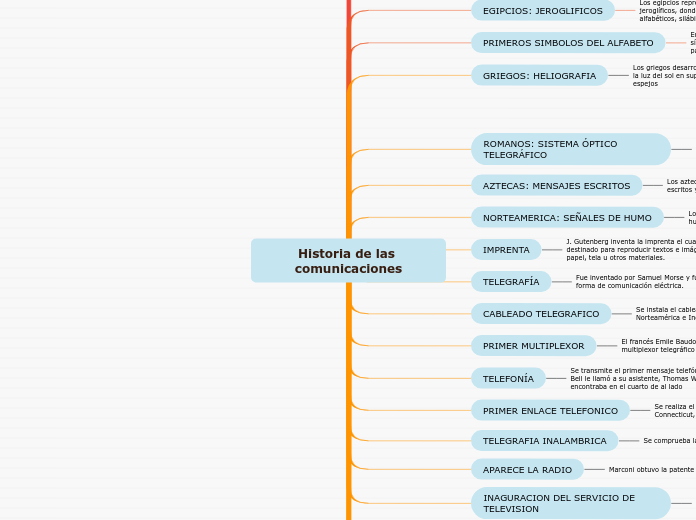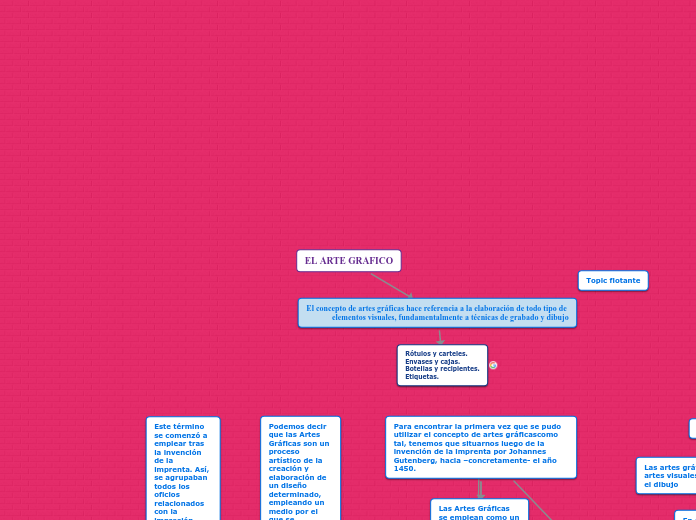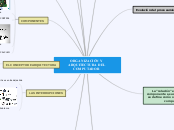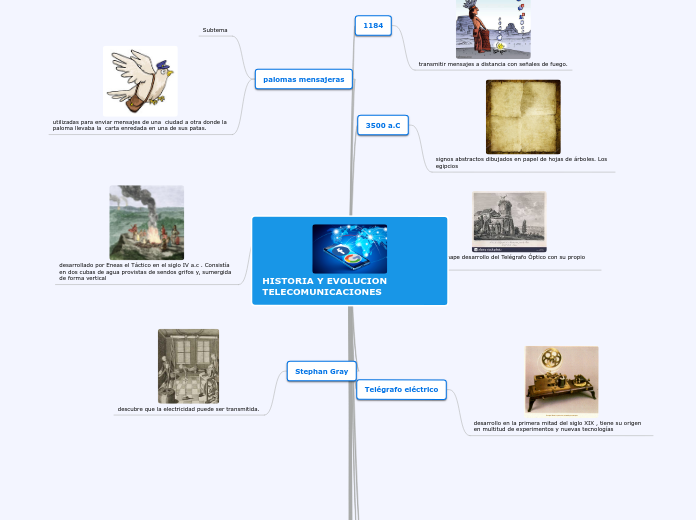Historia de las comunicaciones
To name your story, you have to think about the overall message and what you want your audience to understand from the story. Also, make it relevant and easy to remember.
TELEFONIA CELULAR
Nace la telefonía celular
PRIMERA RED DE COMPUTADORES
Aparece la primera red de computadores Arpanet
PRIMERA COMPUTADORA DIGITAL
Se desarrolló la primera computadora digital
INAGURACION DEL SERVICIO DE TELEVISION
Se realiza la inauguración del primer servicio de televisión de calidad
APARECE LA RADIO
Marconi obtuvo la patente de la radio
TELEGRAFIA INALAMBRICA
Se comprueba la teoría de Maxwell
PRIMER ENLACE TELEFONICO
Se realiza el primer enlace telefónico en New Haven, Connecticut, con ocho líneas
TELEFONÍA
Se transmite el primer mensaje telefónico cuando G. Bell le llamó a su asistente, Thomas Watson, que se encontraba en el cuarto de al lado
PRIMER MULTIPLEXOR
El francés Emile Baudot desarrolla el primer multiplexor telegráfico
CABLEADO TELEGRAFICO
Se instala el cableado trasatlántico, entre Norteamérica e Inglaterra
TELEGRAFÍA
Fue inventado por Samuel Morse y fue la primera forma de comunicación eléctrica.
IMPRENTA
J. Gutenberg inventa la imprenta el cual fue destinado para reproducir textos e imágenes sobre papel, tela u otros materiales.
NORTEAMERICA: SEÑALES DE HUMO
Los indios de Norteamérica hacían uso de señales de humo.
AZTECAS: MENSAJES ESCRITOS
Los aztecas se comunicaban por medio mensajes escritos y llevados por hombres a pie.
ROMANOS: SISTEMA ÓPTICO TELEGRÁFICO
Los ROMANOS utilizaron antorchas puestas en grupos apartados a distancias variantes, en la cima de las montañas para comunicarse en tiempos de guerra.
GRIEGOS: HELIOGRAFIA
Los griegos desarrollaron un mecanismo para reflejar la luz del sol en superficies brillosas como los espejos
PRIMEROS SIMBOLOS DEL ALFABETO
The ending of a story is essential. We all know that if the ending is weak, what happened before loses its importance. So make it unpredictable, but fair. A resolved ending answers all the questions and ties up any loose threads from the plot.
En Siria y Palestina se desarrollaron los primeros símbolos del alfabeto que al unirlos formaban palabras.
This is the closure section of the story.
See examples of possible outcomes below:
- all problems have been solved
- it's clear how each one of your characters ends up
- your main character is transformed by the challenge
EGIPCIOS: JEROGLIFICOS
The middle of the story is where you add layers of complications that will lead to the end. Reveal more about the character's journey. Did their personality go through changes? How did they overcome the challenges? And as you build up the story’s central conflict, make it more personal to that character. Also, from the middle act, you have to lead into the final act.
Los egipcios representaban sus ideas por medio de jeroglíficos, donde algunos de los símbolos eran alfabéticos, silábicos y determinativos.
There wouldn't be any tension and excitement in your story if there weren't any obstacles in your character's way.
PREHISTORIA: COMUNICACIÓN PRIMITIVA
In the beginning of the story (or the exposition), you will need to introduce the setting and characters. You might also want to introduce the main conflict. This part of the story is important because it gives the reader necessary background information and maybe even a first insight into a character’s personality.
En la prehistoria aproximadamente 5.000 A.C, el hombre se comunicaba por medio de gruñidos y otros sonidos
The setting (time & place) of a story can change throughout the plot.
Sonidos
Sensory details include sight, sound, touch, smell, and taste. These details are important because they create depth in your setting.
See a few examples below:
- the smell of fresh bread
- the scent of freshly cut grass
- rain falling onto the windshield etc.
Tambores
Cuernos










